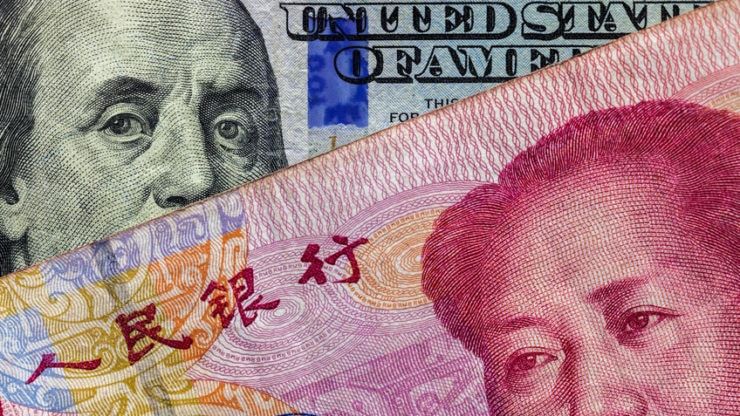The Chinese yuan is on track to hit record lows as global investment banks forecast continued depreciation, spurred by mounting tariff threats from US President-elect Donald Trump.
Analysts predict that new US tariffs, potentially reaching 60% on Chinese imports, could drive the yuan to its weakest level in decades, posing significant challenges for Chinese authorities striving to stabilize the currency and economy.
Chinese yuan depreciation forecasts
Global investment banks project the offshore yuan to weaken to an average of 7.51 per dollar by the end of 2025, CNBC reported citing an analysis of 13 institutional forecasts.
This would mark the currency’s weakest point since 2004, per LSEG data.
Trump, on Monday, announced plans to impose an additional 10% tariff on all Chinese goods, a step further from his campaign promise of 60% tariffs.
Analysts suggest this move could significantly impact currency markets.
“The yuan would need to move to a level of 8.42 against the dollar to fully price in 60% tariffs on Chinese goods,” Mitul Kotecha, Barclays’ head of FX and EM macro strategy for Asia, told CNBC.
Since the US presidential election on Nov. 5, the offshore yuan has declined over 2%, last trading at 7.2514 per dollar on Thursday.
Yuan experienced a similar trajectory during Trump’s first term
The Chinese yuan experienced a similar trajectory during Trump’s first term in 2018 when initial tariffs led to a 5% depreciation.
As trade tensions escalated in 2019, the yuan weakened an additional 1.5%.
However, this time, the stakes are higher due to the magnitude of tariff threats and the existing trade imbalance between the US and China.
Ju Wang, BNP Paribas’ head of Greater China FX and rates strategy, highlighted the heightened uncertainty.
“The magnitude of trade imbalance and tariff threats creates more significant challenges than during Trump’s first term,” she said, adding that inconsistencies in U.S. policy statements could amplify market volatility.
PBOC’s balancing act
China’s central bank, the People’s Bank of China (PBOC), faces a dilemma: defending the yuan from excessive depreciation while avoiding measures that could harm the fragile economy.
A significant yuan decline risks triggering capital outflows and increasing volatility in financial markets.
“The CNY is already nearing the 7.3 per dollar level that authorities have been trying to defend,” Cedric Chehab, chief economist at BMI, told CNBC.
“Pushing past this threshold would increase market volatility, which the PBOC is keen to avoid.”
Despite these pressures, the PBOC has resisted raising interest rates to curb the yuan’s decline, a move that could hinder economic recovery. Instead, it has maintained the onshore yuan’s value by capping the daily reference rate at 7.20 per dollar this year and keeping key policy rates unchanged to stabilize the currency.
Broader Asian FX impact
The yuan’s performance has implications for broader Asian currency markets.
Wei Liang Chang, global FX and credit strategist at DBS Bank, expects China’s stabilizing efforts to curb depreciation expectations and support Asian currency stability.
He remains optimistic that a recovery is possible when U.S. interest rates soften further.
The US dollar index has eased from its recent two-year peak of 108.09, partly due to Trump’s announcement of Scott Bessent as his nominee for US Treasury Secretary.
While Bessent has supported Trump’s tariffs, his preference for a “layered in” approach may help contain trade risks and temper the yuan’s volatility.
Experts agree that the PBOC’s counter-cyclical measures will play a critical role in preventing the yuan from overshooting its downside.
However, the combination of heightened trade tensions and a slowing Chinese economy presents a complex scenario for policymakers and global investors alike.
As the yuan teeters near record lows, the road ahead will largely depend on US-China trade relations, the pace of US rate adjustments, and Beijing’s ability to navigate these economic headwinds.
The post New US tariffs could push Chinese yuan to decades-low levels: analysts explain why appeared first on Invezz

